“What would men be without women? Scarce, sir…mighty scarce.” – Mark Twain
Women can be praised for a multitude of reasons. They make things happen and make many things better. Also in the world of homeopathy there were women who made a difference by means of their wisdom, strength and courage. Margery Grace Blackie was such a woman. She was born on 4 February in 1898, at Redbourn, Hertfordshire, England, the daughter of Robert and Elizabeth Blackie. She literally grew up with homeopathy and was already treated with homeopathic medicines as a child. She was the youngest in a family of ten. Margery’s mother, little Lizzie Blackie, ruled the family. She was an animate and decisive woman, with a strong personality and a quick and good memory. Margery had inherited her mother’s masterful character, although the likeness in looks to her father is evident. As the father enjoyed moving and due to financial needs, they seldom remained in the same house for long. Margery’s parents were a happily married couple and in their home the ideals of Christian service were strongly emphasized. Margery’s childhood is described as a stable one of enduring love and piety and formed many of her characteristics. Throughout her life Margery was supported by affectionate friendships, the first being with Mollie, a niece of hers, with whom she went to school.
When the family moved to Southend in 1910, Margery was a pupil at the Alexandra College at West Cliff on Sea. When they moved to West London in 1911 she became a day girl at the Haberdasher’s Aske’s School in Aeton. There she was greatly influenced by Miss Gilliland, a woman who insisted on a high educational standard, and also cultivated high moral standards. The time there is seen as a landmark in Margery’s life. Her six years there gave a steady continuity to her life and fostered the interest of a town-dweller. Margery was very musical and one of the first violins in the school orchestra. Moreover, she was a keen member of the Nature Study Society.

When Margery was sixteen, war was declared. During this time she was busy contributing to the war effort, by knitting and making garments for servicemen and refugees, whilst concentrating hard on her preparation for the examination to become a doctor. Margery passed the matriculation examination in 1916, and started eagerly as a medical student. At the time, the prospects for young medical women were good, as women had proved their worth during the war and because of the increased demand for their services. Margery moved to London to live with her unmarried sister and came to know a part of London called South Kensington, which became her home for many years and for most of the time she practiced homeopathy.
Margery’s academic record was average. She was not a brilliant student, but she made up for this by her perseverance and diligence. Margery was not drawn towards missionary work like many other students, although she did take on voluntary social work in the East End at that time. Again, Margery was influenced by strong female personalities, amongst them Louisa Aldrich Blake, the first woman to become a Master in Surgery and a true leader and courageous perfectionist who was regarded with much admiration by her students. Professor Winifred Cullis, another dominant figure on the staff also influenced Margery greatly, as well as her best friend and fellow student, Susanna Bernard.
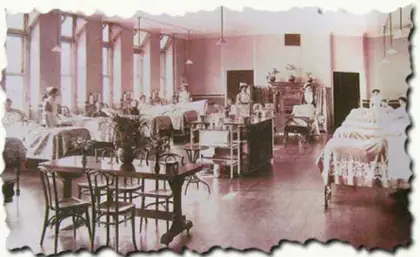
Margery had to unlearn one of allopathy’s basic principles – that the primary purpose is to identify the patient’s disease. In homeopathy, on the contrary, it is about the patient, a topic Margery wrote about in her book “The patient, Not the Cure”, near the end of her life.
“We are not fighting a disease as such, but are helping a patient in his reaction to stress, whether it be mental, physical, bacterial or just because the everyday stress and strain of life has become too much.“[1]
Like her uncle Burnett she realized that the claims made for homeopathy were valid. The LHH grew up steadily and its size had to be expanded several times due to the increased demand for its services. It was obvious that patients improved more rapidly with homeopathy and without the negative side effects and complications of orthodox medicine. However, since its early beginnings homeopathy had to face the hostility of orthodox medicine, and the positive statistics were often kept secret.When Margery started working at the LHH it was exclusively homeopathic, and she often had to take full responsibility for prescribing as a resident doctor. There was an atmosphere of dedication and enthusiasm, and the hospital provided for the needs of the poor. Many patients were treated for free and others contributed financially according to their means. Homeopathy was quite successful at the time and had long attracted adherents from among the aristocracy.
Margery’s working life was characterized by an attitude of devotion from the very beginning, and she was keen to learn. She had a good personal relationship with John Henry Clarke, the hospital’s revered elder statesman, who often invited her to accompany him to the Royal Society of Medicine. Like him, Margery became a strong advocate of the classical homeopathy approach.
Douglas Morris Borland and Charles Wheeler were physicians whose lectures she eagerly attended and with whom she was constantly in touch during her resident years. Margery opined that Dr. Wheeler knew more about the theory and philosophy, but that there was no one who knew more about the personalities of remedies than Dr. Borland. They both influenced her profoundly and set standards which remained with her always. She learned most by sitting in the Out-Patients Department together with her lifelong friend Dr. Frank Bodman, and from informal coffee chats with Borland and Wheeler after their ward rounds. Margery studied eagerly, read and compared very extensively and made records to arrive at drug pictures, which was an important part of her training. During the early years of her medical career, she took her first steps as a teacher, a role in which she became so pre-eminent later. Because of her deep connection to the church, she assisted the Missionary School of Medicines and helped to prepare students for service in remote areas throughout the world.
There was little time in her life for anything but work. Being a Resident doctor at the LHH she spend most time of her life on the spot, but was living her own life now, sharing a flat with Susanna Bernard. The two got on well together and lived together for about six years. At that time Margery experienced a serious disappointment when she fell in love with a young man who had a passion for music, but who her family disapproved of. She ultimately married someone else.
Margery received her MB (Bachelor of Medicine) and BS (Bachelor of Surgery) in 1926. She opened her own practice, spurred by the encouragement of her closest friend at the hospital, Dr. Helena Banks, as well as Dr. Borland, who offered help by sending her patients. In 1926 Margery set up her practice in Drayton Gardens, reopening a homeopathic dispensary which had been closed for 12 years.
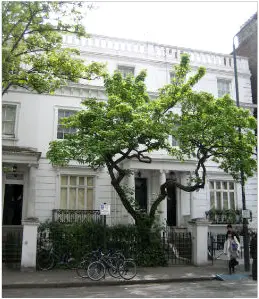
Nineteen thirty two was a milestone in the history of homeopathy in Britain and also for Margery. She read her first paper before the British Homoeopathic Society on the subject of asthma, for which she was warmly congratulated by her colleagues. At the time it seemed that the long-standing prejudice of the medical establishment belonged to the past. Dr. John Weir was the first homeopath to be knighted. He read several papers on homeopathy before the Royal Society of Medicine, which were subsequently published in the British Medical Journal. But Margery never got on well with Sir John, who was so very different in looks and character to Borland. He never forgave Margery for making fun of him when writing this composition, contrasting Weir’s and Borland’s abilities :
The Cure of the Chronic Invalid
For twenty-five or thirty years I suffered agony and tears …
I placed myself in various hands and found no remedy at all –
My tottering hopes began to fall until a friend I chanced to meet
Said “Why not try Great Ormond Street?“
The first Physician I met here was called, I fancy, Dr. Weir.
A large man with a rosy face, he talked at an alarming pace,
percussed my lungs, and banged my thighs and told me stories thick as flies.
My heart went thump – my heart went hop, I thought that he would never stop.
I came all over feeling queer and tottered out from Dr. Weir
Replete with anecdotes galore but as to my Pet maladie no wiser than I was before …
And I was recommended then to Dr. Borland, best of men.
He sat me down upon a chair and started with an absorbing stare.
I felt his eyes investigate the deepest secrets of my state …
His stare bored down into my heart, I felt the perspiration start –
My feet, my knees, my hands, my head, all shook with a consuming dread …
Oh! What a power for a physician to know by force of intuition his patient’s scandalous condition.
When I had almost ceased to hope I thought I saw his fingers grope
And from his pocket came to light a tiny powder wrapped in white.
One sinewy arm he forward flung and placed that powder on my tongue –
Scarce had I swallowed the contents I felt its marvellous influence –
I ceased to sweat, I ceased to shake I ceased to gibber and to quake.
I felt as certain as old Nick that Dr. B. had done the trick.
What an experience indeed for one so long an invalid!
During most of the 1930’s Margery continued as an assistant physician in the Children’s Department at the hospital and at the Nurses’ Home nearby where she took her responsibilities very seriously. She also worked together with Dr. Margaret Tyler, a dominate figure at the hospital, and helped her running an Out-patient clinic for mentally handicapped children. Margery was accumulating experience in working with children and also with the many adults in her practice. Comparing homeopathic prescribing with bird-watching she argued:
“To begin with you study the flight, the size, the colour, the markings and all the rest and then have to go to some book. But, when you have been at it some time, one glance with scarcely a thought and you can name the bird. That does not come, though, without experience and study.” [2]
In 1934 Margery read her second paper on children’s diseases to the British Homoeopathic Society. Her third paper was on the subject of rheumatoid arthritis, a disease which she treated with considerable success.
The war years brought major changes. Her parents died, but she continued her warm friendship with Helena Banks, with whom she shared the enthusiasm for bird-watching. She also continued her friendship with Dr. Campbell Morgan, the star preacher at the Westminster Chapel in Buckingham Gate. Both were firm believers in homeopathy and Morgan was her grateful patient. Margery often accompanied his family on holidays. She visited them almost every morning, often took them shopping and helped them generally. Their affectionate friendship was an invaluable support to her and a joy to both of them.
In 1939 she was appointed as the Physician in charge of the Out-Patient’s Department, and her professional life became busier than ever. The LHH continued to treat many patient’s despite the severe bomb damage it had suffered. Margery’s home in Kensington was not hit. Despite the war, the British Homoeopathic Society continued to function and the Society’s journal was published. From 1943 on, it was possible to establish the practice there on a more permanent basis. It was a great shock when Morgan died in May 1945. However, Margery found in his follower, Dr. Martyn Lloyd-Jones, a wise counselor, a trusted spiritual guide, and understanding friend, and through their friendship she kept up her links with the Westminster Chapel.
The time after the war was a time of new medical developments. Vaccinations and immunization were largely accepted by the general public. Margery, however, was already aware that they had alarming poisonous side effects and suppressive tendencies, that they created iatrogenic diseases and made the patient feel worse. Margery argued:
“The concept of immunization against disease and epidemic is in theory a good thing; however in practice it raises problems.” [3]
“The infectious diseases themselves play a part in the development of the child and the naturally produced immunity is so much more valuable than that produced by injections. “ [4]
Margery also noticed that the increased use of antibiotics was followed by immunological deficiency problems in babies and young children, and that the health of future generations had been jeopardized by the use of hormone therapy and X-rays in expectant mothers. [5]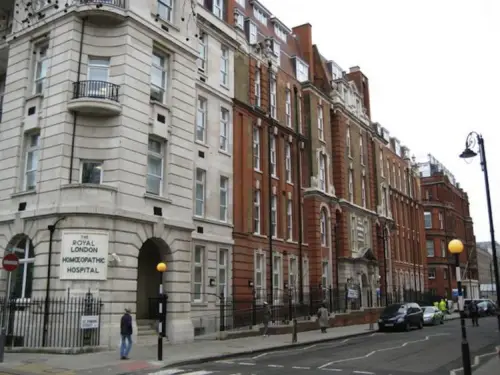
After the war Margery made new personal relationships which changed her way of life. A close friendship blossomed with Musette Majendie and Lady Jane Lindsay, who described Margery as “one of the sweetest, most lovable, finest creatures straight from Heaven” [7]. They both lived at Hedingham and gave Margery’s life a new dimension. This was as much Margery’s home as Thurloe Street, for she was there every weekend. The country life helped her to understand many of her patients who were country folk. Margery referred to Hedingham as home and her loving friendship helped fill the gap after Dr. Campbell Morgan’s death.
Margery seldom allowed herself any breaks from her intensive professional routine. Despite her responsibilities as President of the Faculty, her first priority was her clinical work, both at the hospital and at Thurloe Street. During her years as President she championed the cause of general practitioners and underlined their need, if homeopathy was to spread. Her private practice was extensive and constantly expanding due to her excellent reputation as an outstanding physician with remarkable successes in treating chronic diseases. Margery opined, that:
“It is often said that it is impossible to run a busy general practice and prescribe entirely homoeopathically. After many years of experience as a general practitioner I know that it is possible.” [8]
For a time Margery had a Wimpole Street address, as Sir Weir argued Kensington was no place for an eminent physician to practice. But she was soon back in Thurloe Street, as she never felt settled at Wimpole.
In 1955 she had her first meeting with Her Majesty the Queen, who was to become her patient fourteen years later. At the time homeopathy had already suffered a serious decline, especially in America, where it had been taken over by the medical establishment. Now it had fallen to Britain to take the lead in teaching and research. Margery served on the committee for research, drug provings and education. She was a fellow and council member of the Faculty, and editor of the British Homoeopathic Journal, although literary work was not in her line. Margery fought passionately for the promotion of classical homeopathy and felt deeply disturbed by the metaphysical teachings of Steiner, whose teachings were incorporated by others into their homeopathic practice.
For Margery, classical homeopathy was the only “alternative” that really mattered. Nevertheless, she acknowledged that there were cases where other therapies and treatments were helpful and suggested that homeopathy could be combined with non-homeopathic medicines. She was not prejudiced against other alternative therapies and recommended or used osteopathy, acupuncture and manipulation occasionally. She also used Iscador, an anti-cancer preparation of mistletoe, which was discovered through Steiner’s endeavors in the medical field. But she drew the line very definitely at occult therapies like radionics, radiaesthesia and anthroposophy and felt concerned about the infiltration of non-classical treatments in the LHH.
In 1957 Margery became a Consultant physician at the RLHH where she became the “best known and possibly the best loved of all the present consultants at the hospital” [9]. Margery had already been involved in fundraising in 1947, which wase urgently needed to support research into homeopathy. The lack of any full scientific explanation of homeopathy was one of the reasons for the antagonism by established medicine. Although believing that empirical evidence was infinitely more important than scientific studies, Margery realized that it alone would never win over the unbelieving opposition. She therefore helped organize fund-raising events in aid of the Boyd Medical Research Trust.
In 1964 she had been elected Dean of the Faculty of Homeopathy and was thereby put in charge of the teaching policies which set the standards in Britain. She revised courses for medical graduates and general practitioners, anticipating the future growing demands for homeopathy.
When entering her sixties she didn’t look anything like her age. She was always cheerful and smartly dressed with a big cape, being convinced that looking smart was part of her job. A period of intense activity began after she had passed the normal retirement age of 65. It was unthinkable for her to retire, and she continued on the RLHH staff for several years. She continued her teaching work, caring for patients and generating funds for research and the Educational Trust. She worked very closely with Musette, her close friend who lived at Hedingham. In the spring of 1965 her out-patient work came to an end, and in 1966, when she was 68, she was appointed as Honorary Consultant Physician to the RLHH.
In 1969 Margery became the Physician to Her Majesty The Queen, the first woman to hold this position. She was admitted to the Royal Victorian Order with the rank of Commander, in 1979. In 1971 Helena Banks died after a long decline, causing Margery much personal grief. Also, Sir John Weir died in 1971. Despite all the years of rivalry, Margery was the only doctor he would see.
In 1971 Margery founded the Blackie Foundation Trust, upon which she could call for finance as necessary and which was used for teaching homeopathy and research. In 1972 several homeopaths died in an airplane accident on their way to an International Homeopathy Congress in Brussels (Margery escaped because she abhorred air travel.) The hospital suffered greatly from the loss of it staff. All the homeopaths lost were friends and acquaintances of Margery, and the loss of her young, promising protege Kadleigh was a severe blow. The trauma of the Trident disaster took its toll on her health and she subsequently suffered from acute rheumatoid arthritis. With self-prescription and the aid of her friend, Alan Askew, one of the rising stars of the younger generation of homeopathic general practitioners, she recovered from this agonizing disease. Her resilience, determination and courage had also helped her to overcome her grief. The sudden, premature death of Alan Askew, in 1977, was a further shock for Margery.
Margery now got involved in new activities outside London. She generously supported the work of the Faculty’s Midlands Branch in Birmingham, whose gatherings became an annual event for her. Margery also became Honorary Consultant Adviser of the newly formed interdisciplinary research group, which, in 1977, attained formal status as the Midlands Homoeopathy Research Group, with the goal to explain homeopathy in scientific terms.
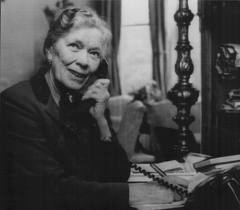
Margery suffered a fractured a hip in the spring of 1979, but managed to get to her feet again and went on seeing patients at Thurloe Street (where she still admitted doctors as observers to her consultations). In Spring 1980, she finally left London for good. Her practice was sold in such a way that a continuing association with homeopathy was ensured. She spent the last year and a half at Hedingham where she lived with Musette. After Musettes death the menage at Hedingham had dispersed and Margery was cherished lovingly by Joyce Westmorland during her last three months. Three of her closest colleagues ensured her homeopathic treatment. During the summer of 1981 Margery became increasingly frail and, after having a stroke, she died peacefully on August, 24, 1981.
“She was a living example of how life should be lived, how folk should be treated and how money should be handled.” [10]
Margery Blackie was an exceptionally gifted physician and one of the foremost British homoeopaths of the 20th century. Her personality and her insatiable desire to heal have always been an inspiration to others. Her energy was inexhaustible and her enthusiasm irrepressible. Even during her last years she still had the same enthusiasm for medicine as in her student days. She had great personal charm and an amazing intuition. Her mind was sharp and she was courageous and intensely conscientious. Margery could always remember the details of a case and prescribed with utter confidence. She was much beloved by her patients as a gentle and compassionate physician. She loved flowers and always had some arranged in her practice, along with an open fire to provide a relaxing atmosphere. Margery used to lead each patient from the waiting room to the consulting room personally, to learn as much as possible them, teaching us that:
“Without their saying a word the patients can tell so much to the experienced homeopathic doctor… We gain information’s from the way the patient gets up and walks in… just from shaking hands with a patient one can learn a lot.” [11]
Margery was known to her fellow doctors as a decisive woman. Her assistants had to work under almost military discipline, but she was said to be marvelous to work with. Margery had always been an inspired and popular lecturer due to her lively style and fine sense of humor. In 1976 she published her book “The Patient, Not the Cure”, which was made up largely of case histories and anecdotes. In her book “Classical Homoeopathy” her complete teaching legacy is put down on paper.
Margery always had a strong aversion to bureaucracy and had no head for money, often ignoring usual formalities concerning fees. She was extremely direct in her likes and dislikes and it was not in her nature to delegate. She liked to be at the center of conversation, but was averse to discussing sexual behavior and love affairs. Margery could be impatient and intolerant, and at times aggressive and stern.She was quick in her reactions with a tendency to anger, but had the ability to apologize humbly. She was also vulnerable and sensitive, and thrived on affection and appreciation. Margery was a good driver and croquet player, and enjoyed bridge, but she did not like losing! She had a severe aversion to insects but loved birds. Bird watching and jigsaw puzzles were one of her greatest pleasures on weekends. When she was asked whether the birds in the garden were not a problem for the forsythia buds, she answered sarcastically: “We grow the forsythias specially for them“.[12]
Although Margery did not speak much about her Christian faith it was of vital importance to her. She found ethical guidance in the Bible, whose book was as important to her as Kent’s Repertory. Although Margery was a keen upholder of Kentian principles in her early years, she was convinced that there was a place for low, as well as high potencies and a confident prescriber of both.
“There are high potency remedies which can be taken in one dose or three or four doses in one day which are sufficient to start a patient on the road to recovery. Then there are low potency remedies which are prescribed more often on local symptoms, and can be given three or four times a day until improvement sets in. One does not get, nor does one expect, the dramatic effects which one would see after a high potency remedy. Also, low potencies can be taken for three or four weeks if needed. But to do this successfully requires a thorough knowledge of the remedy and the significance of the patient’s symptoms. And to do this, one must have been thoroughly trained in medical diagnosis and pathology.” [13]
“In gardening terms I compare my high potency to a shower of rain, and my low potency to the watering can that I must use occasionally on some corner of the garden in order to weather a critical stage.” [14]
The concept of constitutional prescribing played an important role in Margery’s practice, and over the years she had gained a very deep understanding of the characteristics of the various constitutional types. Margery argued that:
“The constitutional drug is that which is most effective in treating the individual in the sum total of his strengths and weaknesses; mentally, emotionally and physically.” [15]
To discern the real person and find the constitutional drug one has to study the patients, how they look and behave, and what they are saying, and to consider all other factors that enter into the picture. Margery warned that no single condition suggests the remedy, but that it is the combination of factors that lead the homeopathic doctor to prescribe for the particular patient. Whilst considering the personality and individual, characteristic ways of acting, Margery also emphasized that:
“However homoeopathic remedies are classified, it is always on the totality of the symptoms that the drug is selected for treatment.” [17]
That Hahnemann’s ‘totality of characteristic symptoms in the patient’ and ‘the drug” must match, if cure is to result, had also been re-enforced by Dr. Borland and Sir John Weir, who studied under Kent. [18] Other eminent homeopaths who influenced Margery’s development and shared her attitude of devotion to homeopathy, included Dr. James Ivy Compton Burnett, Dr. Skinner, Dr. Cooper, Dr. John Henry Clarke, Dr. Wheeler, Sir John Weir, Dr. Margaret Tyler, Dr. Elizabeth Wright Hubbard, and of course Dr. Douglas Morris Borland. Her contributions to homeopathy have been acknowledged ever since and her legacy lives on in the homeopaths who she taught.
When faced with new, challenging diseases nowadays, let’s remember her saying: “’Where there is life there is hope’ is the motto of the homoeopath.”[19]
“In the last twenty years scientists have isolated innumerable viruses … We homeopaths might well say that today there may be as many viruses, but there have always been remedies to cope with the individual…” [20]
“Homoeopathy has not changed at all since Hahnemann founded it, and since it has not been affected by all the modern knowledge it is thought to be obsolete. Medicine, on the other hand, is advancing dramatically every year. But as I wander between Hahnemann’s Organon and modern medical journals, I conclude that homoeopathy started in advance and that orthodox medical knowledge has not yet caught it up.” [21]
Footnotes
[1] Margery Blackie, The patient, not the cure, p.57
[2] Margery Blackie, Classical Homeopathy, p.26
[3] Margery Blackie, The patient, not the cure, p.185
[4] Margery Blackie, The patient, not the cure, p.185
[5] see Margery Blackie, The patient, not the cure, p.180
[6] C.B.Smith, Champion of homoeopathy, The life of Margery Blackie, p. 88
[7] C.B.Smith, Champion of homoeopathy, The life of Margery Blackie, p. 97
[8] M Blackie, Classical Homoepathy, p.24
[9] C.B.Smith, Champion of homoeopathy, The life of Margery Blackie, p. 112
[10] Maregry Blackie, Champion of homoeopathy, The life of Margery Blackie, p.100
[11] Margery Blackie, The patient, not the cure, p.59
[12] Constance Babington Smith, Margery Blackie – The woman
[13] Margery Blackie, The patient, not the cure, p.4
[14] Margery Blackie, Classical homoeopathy, p.13
[15] Margery Blackie, The patient, not the cure, p.8
[16] Margery Blackie, The patient, not the cure, p.48
[17] Margery Blackie, the patient, not the cure, p.75
[18] see Margery Blackie, The patient, not the cure, p.163
[19] Margery Blackie, Classical Homoeopathy, p.9
[20] Margery Blackie, The patient, not the cure, p.53
[21] Margery Blackie, Classical Homoeopathy, p. 37
Poem quoted in: Constance Babington Smith, Margery Blackie – The woman, The second Blackie Memorial lecture, 1985
References
-
Constance Babington Smith, Champion of homoeopathy, The life of Margery Blackie, Beaconsfield, 1985
-
Margary G. Blackie, The Patient, Not the Cure, Santa Barbara, 1976
-
Margery G. Blackie, Classical Homoeopathy, Beaconsfield Publishers Ltd., 1986
-
A.T.Kirschmann, A Vital Force, Woman in American Homeopathy, NJ, 2004
-
Constance Babington Smith, Margery Blackie – The woman, The second Blackie Memorial lecture, 1985
-
Julian Winston, The faces of homoeopathy, Oakland, California, USA, 1999



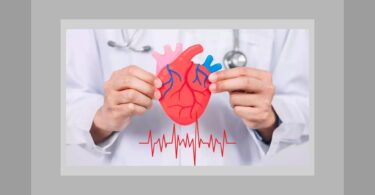
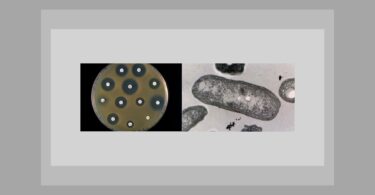

0Thank you for presenting the life a. work of an outstanding lady a. pillar of Homoeopathic Science and Art.
Stefan
Thanks, Stefan.
Katja
Dr.margery blackie her both books are excellent ,classical homeopathy ,challenge of homeopathy….
Best resume of Margery Blackie’s life that I have ever read (!) As mentioned and rarely picked up elsewhere, Margery Blackie was a huge admirer of Campbell Morgan who was the highly erudite leader at the nearby Westminster Chapel. His many books such as The Spirit of God blow the socks off other Christian writers of the time. Margery Blackie would regularly pick up provisions for Campbell Morgan and his wife, and even took Campbell Morgan and his wife off on holiday in her Buick. She continued to be a great patron of the Westminster Chapel after Campbell Morgan’s death when Martyn Lloyd Jones replaced him.